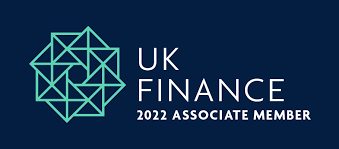What is fixed rates?
Fixed rates are a fundamental concept in finance, particularly relevant for loans, mortgages, and savings products. For a UK audience, understanding fixed rates is essential for making informed decisions about borrowing, investing, and managing personal finances.
Key Aspects of Fixed Rates:
- Definition:
- A fixed rate is an interest rate that remains constant for a specified period, regardless of changes in the broader economic environment. This means that the amount of interest paid on a loan or earned on an investment does not change over the term of the agreement.
- Applications of Fixed Rates:
- Mortgages: Fixed-rate mortgages offer a stable interest rate for a set number of years, typically ranging from two to ten years. This ensures consistent monthly payments, making it easier for homeowners to budget.
- Personal Loans: Fixed-rate personal loans provide borrowers with a clear repayment schedule, as the interest rate and monthly payments remain unchanged for the loan’s duration.
- Savings Accounts and Bonds: Fixed-rate savings accounts and bonds guarantee a set interest rate for the investment period, providing predictable returns.
- Advantages:
- Predictability: Fixed rates offer financial certainty, as the interest rate remains unchanged, making it easier to plan and budget.
- Protection from Rate Increases: Borrowers are safeguarded against potential rises in interest rates, which could increase repayments in variable-rate products.
- Stable Returns: Investors benefit from consistent returns, which can be particularly advantageous during periods of economic instability or falling interest rates.
- Disadvantages:
- Potential Higher Costs: If market interest rates decrease, those with fixed-rate loans may end up paying more than those with variable rates.
- Limited Flexibility: Fixed-rate products often come with early repayment penalties, making it costly to switch or pay off the loan early.
- Missed Opportunities: Investors with fixed-rate savings might miss out on higher returns if interest rates rise.
- Examples:Fixed-Rate Mortgage:
- A homeowner in the UK takes out a 5-year fixed-rate mortgage at 3%. This means their interest rate, and thus their monthly payments, will remain constant for the first five years, regardless of market fluctuations.
Fixed-Rate Savings Bond:
- An individual invests £10,000 in a 3-year fixed-rate savings bond at an interest rate of 1.5% per annum. The interest earned each year will be £150, providing a predictable and stable return.
- Comparison with Variable Rates:
- Variable Rates: Interest rates that can change over time, typically in response to movements in the base rate set by the Bank of England or other market conditions.
- Risk and Reward: Variable rates can offer lower initial rates and the potential to benefit from falling rates, but they also carry the risk of increased payments if rates rise.
- When to Choose Fixed Rates:
- Stability Preference: Ideal for individuals who prefer financial certainty and want to avoid the risk of rising interest rates.
- Long-Term Planning: Suitable for those who want to plan their finances over a long period, such as homeowners looking to manage mortgage repayments predictably.
- Economic Conditions: Fixed rates can be advantageous during periods of low interest rates if a rise in rates is anticipated.
Conclusion:
Fixed rates provide stability and predictability for borrowers and investors in the UK. They are an essential tool for managing personal finances, offering protection against interest rate fluctuations and ensuring consistent financial planning. Understanding the benefits and drawbacks of fixed rates helps individuals make informed decisions about mortgages, loans, and savings products, allowing for better financial management and peace of mind.

